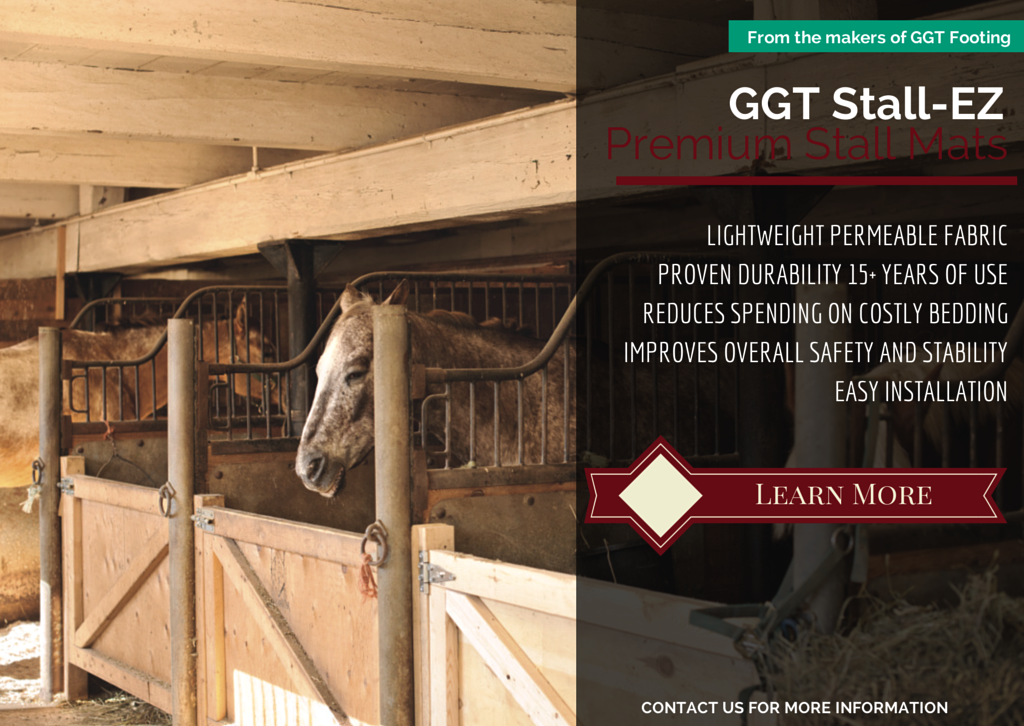When considering an arena that will be used primarily for jumping, there are many factors to consider. Perhaps the most important is the level of competition that will take place in the arena. If the space will be used competitively, then USHJA guidelines should be consulted for size requirements and other details.
The United State Equestrian Federation recognizes a range of competition levels for Hunter Class and Jumper Class events. Each level has its own requirements for ring size and additional facilities.
For example, an outdoor arena used for local competitions must be at least 20,000 square feet. An indoor arena must be at least 14,000 square feet. By comparison, an outdoor ring for the highest level of competition must be a minimum of 28,000 square feet, and an indoor ring must be 20,000 square feet.

Caption: Footing for jumper rings must allow for speed and agility, give the horse adequate support for takeoff, and prevent injury upon landing.
Standards for top-level jumper arenas include:
- Separate warm up ring
- Exercise area (minimum 18K sq ft indoors and 24K sq ft outdoors)
- Longing (lunging) area (minimum 15K sq ft)
- Seating for minimum of 100 people
- Shelter for horses and riders, accessible to the ring
Indoor/Outdoor
Jumper rings can be indoors or outdoors, or a combination. If the ring will be used year round in a cold climate, then a fully enclosed facility is preferred. In warmer climates, an outdoor facility, or ring with a roof, would be appropriate. Larger equestrian areas, like the Fieldstone Show Park in Halifax, MA, include both indoor and outdoor facilities.
Siting the Arena
Once the size and layout of the arena is determined, it's important to site the arena in an area with excellent drainage, to prevent water from collecting on the surface of an outdoor facility or flooding an indoor one. If future plans include the possibility of expanding the facility, this should be considered when choosing the best site.
Footing
Footing is the surface material of the arena. Footing for jumper rings must allow for speed and agility, give the horse adequate support for takeoff, and prevent injury upon landing. In an earlier post we offered tips for choosing the best footing for jumpers.
If you're considering building a jumper arena, please contact us for a free consultation.


